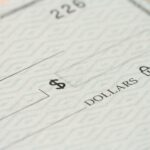Filing for bankruptcy is a serious decision that requires careful consideration. It is important to understand all of the potential consequences of filing bankruptcy before making the decision to do so. Bankruptcy is a legal process that allows individuals and businesses to discharge most of their debts. It is a way for debtors to start over and begin rebuilding their finances. When an individual or business files for bankruptcy, their assets are liquidated and used to pay back creditors. Depending on the type of bankruptcy filed, some debts may be discharged or partially discharged. It is important to speak with a lawyer or financial advisor before filing for bankruptcy to ensure you understand the process and the potential consequences.
Table of Contents
The United States Bankruptcy Code, a federal statute, governs bankruptcy, therefore the procedure is the same in any of the 90 federal bankruptcy courts nationwide. The bankruptcy process is only provided as a broad overview in this book because there can be regional variances and because every case is unique.
The Types of Bankruptcy
There are several types of bankruptcy in the United States. The most common types are Chapter 7, Chapter 11, and Chapter 13.
Chapter 7 is a liquidation bankruptcy, where debtors have their assets sold and the proceeds used to pay creditors.
Chapter 11 is a reorganization bankruptcy, which allows businesses to restructure their debts and continue operations.
Chapter 13 is a repayment plan bankruptcy, which allows individuals to create a payment plan and pay off their debts over time.
Additionally, there are other types of bankruptcy such as Chapter 9 and Chapter 15. Each type of bankruptcy has its own eligibility requirements and consequences, so it is important to speak with a bankruptcy lawyer to determine which type is best for your specific situation.
The Step by Step Guide
1) Choose the type of bankruptcy filing
Individual bankruptcy protection is available in a few different varieties, each of which is designated after a different chapter of the Bankruptcy Code. You must choose between Chapter 7 and Chapter 13 relief before filing for personal bankruptcy. If you’ve made up your mind to file, you may opt to file for Chapter 7 bankruptcy, which is the most popular kind. You voluntarily turn over assets to the bankruptcy court during a Chapter 7 petition, and the court then sells the assets and distributes the proceeds to your creditors.
2) Compile financial records
You’ll want to put everything in an organized manner that lists your income, expenses, assets and of course debt. This should be easy to read as it will give the courts and anyone trying to help you a clear understanding of your situation.
3) Get credit counseling within 180 days before filing
Before you may file for bankruptcy, you must complete the necessary bankruptcy counselling. It demonstrates to the court that you looked into all other options before declaring bankruptcy. The counsellor must come from one of the authorised providers mentioned on the website for the US Courts. The majority of credit counselling organisations provide this service over the phone or online, and upon completion you are given a certificate that must be included in the papers you submit. Your filing will be denied if you don’t complete this step.
4) File the petition
This may be the ideal time to hire a bankruptcy attorney if you haven’t already. Legal representation is not necessary for those declaring bankruptcy. You can attempt to file for bankruptcy on your own, but doing so entails a significant risk. Knowing which bankruptcy regulations, both federal and state, apply to your situation is crucial. Both judges and court personnel are prohibited from giving counsel. You should be aware of several significant variations between Chapter 7 and Chapter 13 while making judgements, as well as the numerous forms that must be filled out. The outcome of your case may be impacted if you are unaware of or fail to adhere to the right protocol and guidelines in court. You run the risk of having your property seized by the bankruptcy trustee and sold if you don’t seek legal counsel.
5) Meet with creditors
When your petition is approved, a bankruptcy trustee is assigned to handle your case and schedule a meeting with your creditors. Your creditors are not obligated to attend, but you must. They have the chance to enquire about your case from you or the court trustee at this time.
6) Complete debtor education
You must finish a post-filing debtor education course in addition to the pre-bankruptcy credit counselling course before your debts can be dismissed. You must take this course from a business that has received government approval, just like you did for the pre-bankruptcy credit counselling course. You must have this certificate to finish your bankruptcy. Post-filing debtor education will teach you how to manage your finances, set up a budget, and responsibly use credit. The fee ranges from $50 to $100, but if you can’t afford it, you might be able to get it waived.
7) Receive your notice of debit discharge
The elimination of your debts is the final phase. Depending on the form of bankruptcy you select, the length of time it takes for your debts to be discharged varies. When your creditors have released your debts, you will be notified. Your bankruptcy process is over at that point.
Remember this can be a difficult path and experience, but you should never feel like you are alone. You should also know, there is light at the end of the tunnel.

Meds is an attorney currently residing on the East Coast, where he practices law. While his primary focus lies in criminal law, he also has experience in family and personal injury law. His legal background enables him to navigate a variety of legal challenges and provide comprehensive assistance to his clients.




